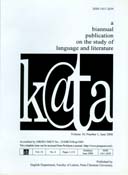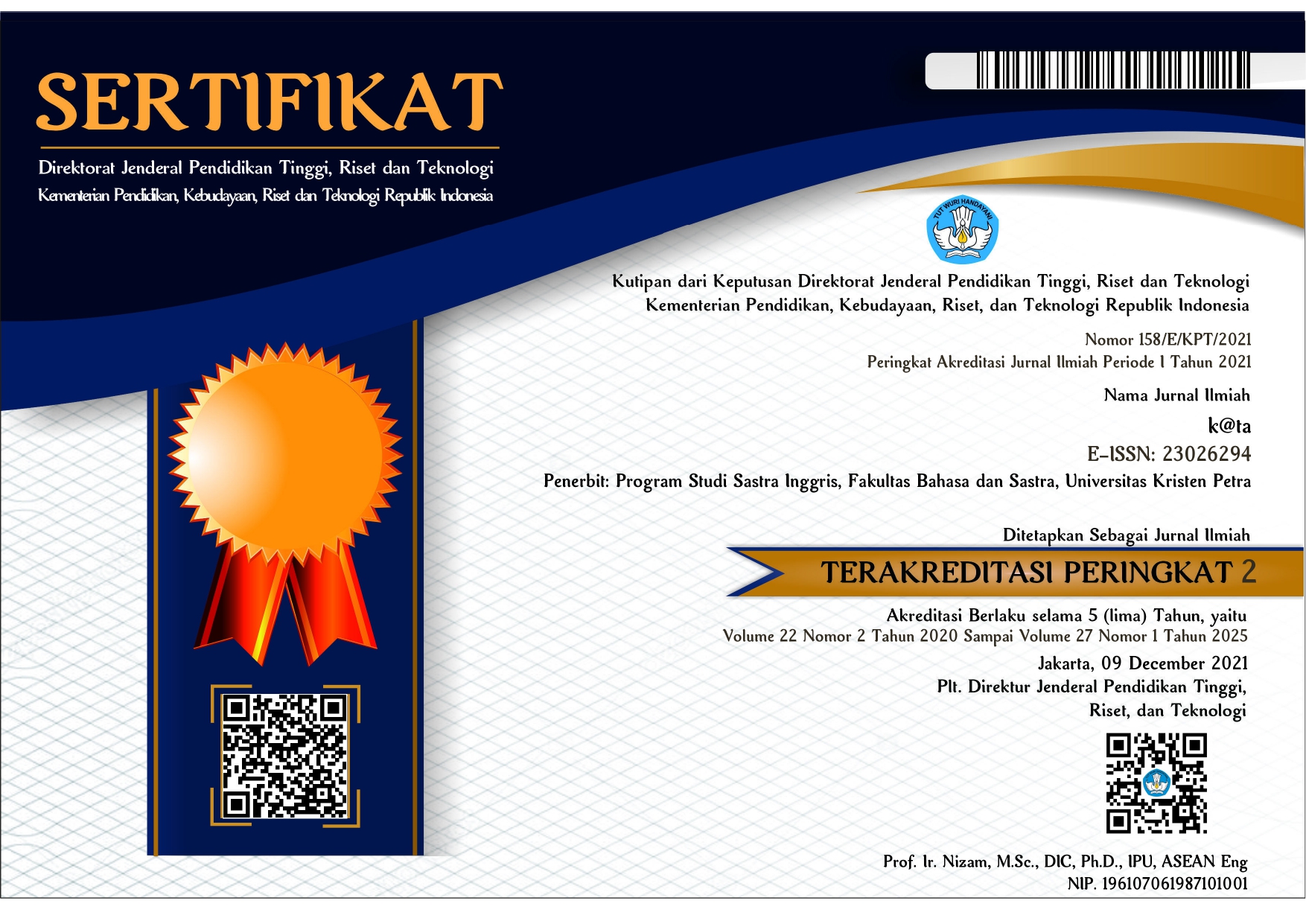The Portrayal of Occultism in “The Call of Cthulhu†(1928) by H.P. Lovecraft
Abstract
H.P. Lovecraft crafted an intricate mythos which initially did not find success until after his death, and his works, most notably “The Call of Cthulhu†(1928), were regarded to be a landmark towards the relevancy of occultism both in the field of literature and religious belief. The short story was regarded to be the staple of “cosmic horror†which Lovecraft applied to almost all of his stories. The paper analyze how “The Call of Cthulhu†influenced the belief of modern occultism, which can be inferred from the literary elements in the story. Further analysis will also identify how Lovecraft portrayed the subgenre “cosmic horror†to enhance the elements of occultism within the short story. In relation to the previous elements, the paper examine how a particular cult, Typhonian Order, was influenced by the elements of occultism used in the story.
Downloads
References
Bogdan, H. (2015). Chapter Thirty-Three: Kenneth Grant and the Typhonian tradition. In Partridge, C. (Ed.). The occult world (pp. 323-330). New York, NY: Routledge.
Bolton, K., R. (2011, February 10). The influence of H P Lovecraft on occultism. The Irish Journal of Gothic and Horror Studies, 9.
California Cults (1930, March 31), TIME, p. 3. Retrieved from http://content.time.com/time/subscriber/article/0,33009,738983-2,00.html
Conway, D. (2016). Magic: An occult primer. Newport, RI: The Witches’ Almanac.
Emrys, R. (2018, August 16). H.P. Lovecraft and the the shadow over horror, NPR. Retrieved from https://www.npr.org/2018/08/16/638635379/h-p-lovecraft-and-the-shadow-over-horror
Engle, J. (2014). Cults of Lovecraft: The impact of H.P. Lovecraft’s fiction on contemporary occult practices. Mythlore: A Journal of J.R.R. Tolkien, C.S. Lewis, Charles Williams, and Mythopoeic Literature, 33.
Evans, T. (2005). A last defense against the dark: Folklore, horror, and the uses of tradition in the works of H. P. Lovecraft. Journal of Folklore Research, 42(1), 99-135.
Grant, K. (1999). Beyond the mauve zone. London: Starfire Publishing Ltd.
Grant, K. (1972). The magical revival. London: Muller.
Jenkins, P. (2011). The great anti-cult scare 1935-1945. Retrieved from https://www.cesnur.org/testi/bryn/br_jenkins.htm
Jorgensen, D., & Lin Jorgensen. (1982). Social meanings of the occult. The Sociological Quarterly, 23(3), 373-389.
Levenda, P. (2013). The dark lord: H.P. Lovecraft, Kenneth Grant, and the Typhonian tradition in magic. Lake Worth, FL: Ibis Press
Lloyd, S., M. (1978). The occult revival: Witchcraft in the contemporary United States.
Lovecraft, H., P. (1928, February). The call of Cthulhu. Weird Tales, 11(2), 159-178 & 287.
Lovecraft, H., P. (1927). Supernatural horror in literature. The recluse. Retrieved from www.hplovecraft.com/writings/texts/essays/shil.aspx
Meyer, T. (2010). Illuminating the occult: W. B. Yeats in Nick Bantock's Griffin and Sabine series. Journal of the Fantastic in the Arts, 21(1 (78)), 5-25.
Mullis, J. (2015). Playing games with the Great Old Ones: Ritual, play, and joking within the Cthulhu mythos fandom. Journal of the Fantastic in the Arts, 26(3 (94)), 512-530.
Pérez de Luque, J., L. (2013, 23 August). Communal decay, narratological and ideological analysis of H.P. Lovecraft’s fiction. Córdoba: Servicio de Publicaciones de la Universidad de Córdoba.
Ralickas, V. (2008). Art, cosmic horror, and the fetishizing gaze in the fiction of H. P. Lovecraft. Journal of the Fantastic in the Arts, 19(3(74)), 297-316.
Riezler, K. (1944). The social psychology of fear. American Journal of Sociology, 49(6), 489-498.
Snyder, P., J. (2017). Dreadful reality: Fear and madness in the fiction of H. P. Lovecraft (Honors thesis). Retrieved from
https://aquila.usm.edu/cgi/viewcontent.cgi?article=1546&context=honors_theses
Stark, R., Bainbridge, W., & Kent, L. (1981). Cult membership in the Roaring Twenties: Assessing local receptivity. Sociological Analysis, 42(2), 137-161.
Urban, H. (2004). The beast with two backs: Aleister Crowley, sex magic and the exhaustion of modernity. Nova Religio: The Journal of Alternative and Emergent Religions, 7(3), 7-25.
Winslade, J. (2000). Techno-Kabbalah: The performative language of magick and the production of occult knowledge. TDR (1988-), 44(2), 84-100.
Wohleber, C. (1995, December). The man who can scare Stephen King, American Heritage. Retrieved from https://www.americanheritage.com/man-who-can-scare-stephen-king?page=show
Young, P. (2002). L.A. exposed: Strange myths and curious legends in the City of Angels. St. Martin's Publishing Group.
Zeller, B., E. (2019, 30 December). Altar Call of Cthulhu: Religion and millennialism in H.P. Lovecraft’s Cthulhu mythos. Religions, 11(1).

This work is licensed under a Creative Commons Attribution 4.0 International License.
![]() This work is licensed under a Creative Commons Attribution License
This work is licensed under a Creative Commons Attribution License




.png)
.png)

.png)












